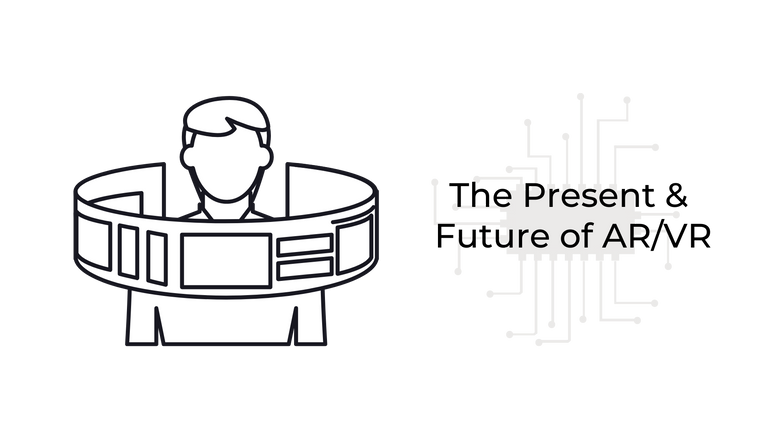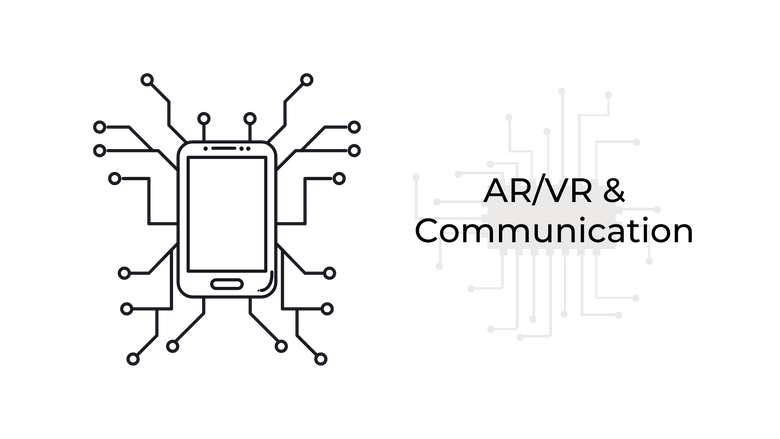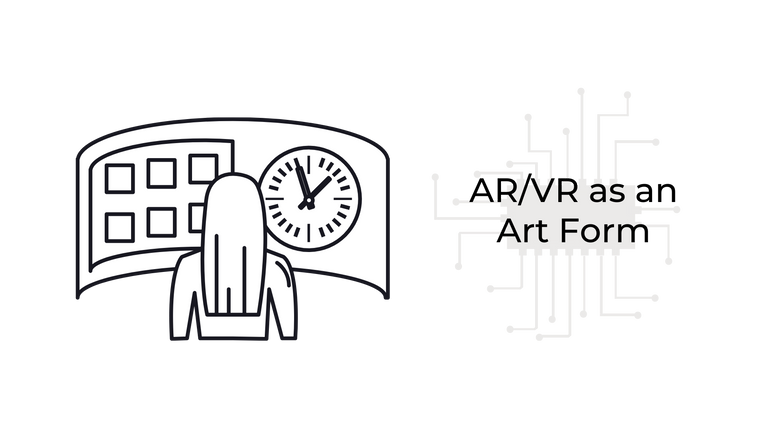Enara Nazarova: Discussing the Future of AR/VR
“We are living in such a cool moment in history, but we’ve been here before.”
The future of AR/VR looks auspicious, and not just for Silicon Valley. Storytelling, art and accessibility are all shifting due to AR/VR. Enara Nazarova, Turkmenistan-born, New York-based marketer, community builder and XR evangelist, sees AR/VR as an inevitable internet evolution. She is on a mission to inspire the next wave of creative technologies that will shape the future of digital fashion and allow people to express themselves in the Metaverse.

What is your experience with AR/VR? How has the field changed since you've started, and how has that impacted your career?
When working for music and tech festivals, I was exposed to a variety of cutting-edge performances and tools. I got into AR/VR by accidentally walking in on the demo of Wave XR, after which I wasn’t the same. I immediately got involved with a local SIGGRAPH chapter to host VR pop-up experiences and started using Google Tilt Brush to create immersive marketing campaigns. Since 2016, XR tech has gone through a massive transformation from niche to early-mass adoption. As hardware, software and latency improve, AR/VR headsets will continue to become more accessible. The market is ripe for innovation and companies like Unai are ready to take on tech giants like HP, HTC, Oculus, Sony, Samsung and Lenovo.
Apple is rarely the first on the market, but its products are often the last. They popularized AR across 1.5 billion devices active on the market using ARKit. You could say they have been preparing for this transition since the introduction of wireless AirPods. This shows Apple’s commitment and long-term vision in this market.
What do you hope AR/VR will be used for in the future? Why?
We live and naturally navigate a 3D world. The trick with creating AR/VR experiences is unlearning the way we navigate 2D interfaces and creating spatially-native experiences we cannot create otherwise. For example, in the enterprise sector, many industries rely on creating physical prototypes before they decide on the final product. If you are able to create, duplicate and manipulate models in a way you can’t in real life within hours instead of days, this can offer great savings on cost, time and resources. Companies like Volvo have partnered with Varjo to speed up automotive design and tools like Tvori are helping designers to prototype immersive experiences at scale.
What excites me most about AR/VR is its power to help us create 3D spaces where we can build our own identities, games and worlds. The explosive growth of online transactions and improvements in 3D tech has set the stage for the virtual goods economy. Over the last year younger consumers — and their parents — became increasingly more accustomed to paying for virtual items on social gaming platforms like Steam, Fortnite and Roblox. Artists and digital art collectors have turned to blockchain technology to authenticate and sell their work. A good example of an emerging virtual creative economy that leverages crypto transactions and can be accessed with VR is Decentraland. I believe that virtual worlds are the next phase of e-commerce platforms and will continue empowering people to become landowners and merchants.

How will AR/VR change the way we interact? Will this satisfy certain needs for socialization (especially now, during a pandemic)?
The huge economic losses of the 2020 COVID-19 pandemic forced industries to reform and accelerated the popularity of virtual social venues. But since 2019, kids under the age of 13 have already been spending more time on Roblox and Animal Crossing, than Facebook, YouTube and Netflix combined. When virtual in-game currencies like Robux and V-Bucks make their Christmas and birthday wishlists, you know there’s a behavioral shift underway.
Virtual transaction-capable playscapes allowed artists like Travis Scott to perform a concert in Fortnite, making $20m for a single nine-minute concert and attracting 12M viewers worldwide (which is equivalent to 578 sold-out Madison Square Gardens). Similar to how Napster disrupted the music industry by inventing streaming, virtual merchandise is revolutionizing the way people can market, distribute and sell their work. While Generation Z is the first generation of digital natives who grew up with technology and screens all around them, soon people will be born into a world where they will think in XR first.
The promise and possibility of the Metaverse is a long-term dream that will be made possible with the interoperability of several industries (ML/AL/XR/Blockchain, etc). AR/VR will allow us to shop, socialize and “commute” to work in digital worlds. I’m excited for the time we'll be able to seamlessly take our personal avatars from one world to the next.
How does AR/VR promote communication now, and how can that be improved in the future?
Miscommunication is at the root of most interpersonal problems and considering how much communication is nonverbal, calling, emailing and Zooming are doing only part of the job. Though the modern emoji hieroglyphics do help us communicate subliminal messages, AR/VR’s potential to provide an embodied presence and “teleport” us across time and space sounds like magic in comparison. And in many ways, it is.
COVID-19 has been referred to by many as “the great accelerator.” The past year revealed to us vulnerabilities of our current systems and showed us opportunities for how we could do things differently. For example, when not given a choice, companies relied on digital tools for their workflows and interaction with staff. With millions of employees being able to work remotely, letting go of commuting and having time to eat lunch made us realize that the Metaverse is already partially here.
In my experience working at tech conferences, investment of resources for venues ate away at the profitability, while limited venue capacity hindered ticket sales. If being physically present was the only way to connect with someone before, with AR/VR we can build a decentralized model of operation and dissolve the nine-to-five employee relationship
One of the reasons why people move to Silicon Valley is the density of talent and proximity to career-making opportunities. Many of the world's top technologists live in San Francsico but there are many more distributed globally. Diversity of talent and perspectives are a huge competitive advantage and AR/VR technology is enabling more people to come together and work, having a higher chance of breakthrough ideas. Serendipity of SF can now be re-created using virtual tools like Spatial, VRChat, Virbela, MeetinVR and even Animal Crossing opening you up to talent and ideas on a global scale.

AR/VR has been slowly going from novelty to a completely new art form. What do you think will facilitate this overall transition?
I think AR/VR is starting to exit the niche market and approach early-mass adoption. For a while, AR/VR struggled with access to good content. It still does, but now that headsets have become more affordable, more people are able to create immersive experiences. Having AR/VR in your company name is like having an “investor repellant,” considering how many investors got burned in the early rounds of funding companies that fell short of consumer expectations.
However, improved access to headsets (Oculus selling north of $300 during the holiday season) and open-source access to Google Tilt Brush are inviting more artists and designers in the content creation process, which is great for this medium.
In many ways, I believe we speak the future into existence through arts, literature and films. These ideas permeate our culture, our imaginations and eventually inspire our work. AR/VR is an emotionally evocative medium that blends the boundary between art and immersive journalism. You can step into someone else’s experience and have the ability to relive memories as a passive viewer or as an active participant through an immersive performance. Alejandro G. Iñárritu’s VR installation CARNE y ARENA explores a multi-narrative journey of immigrant refugees with human characters, helping you “[walk] in the immigrants’ feet, under their skin, and into their hearts.”
An excellent example of an AR storytelling project is Asad J. Malik’s Terminal 3 piece, which is based on real-life airport interrogation experiences of Muslim passengers. In this experience, the viewer had the power to end the interrogation by choosing to let the passenger into the country — or not.
Will there potentially be new art or forms of storytelling emerging through AR/VR?
Yes, this is a given. A new study published in the Journal of Evolutionary Studies in Imaginative Culture proposes that our ancestors’ survival was inextricably linked to their ability to pass on knowledge through images and stories. We are living in such a cool moment in history, but we’ve been here before. That feeling when photographs were becoming a thing, when movies were starting to be made, when space travel became possible; these milestones opened up a new world for us. And in many ways, we got ourselves here. Fantasy and fiction of books, music and films inspired us to dream and birth these worlds into existence.
Whether it’s reading Snow Crash, or watching Minority Report or Ready Player One that got you thinking about the Metaverse, the stories that will be told within this medium are going to be like nothing we’ve seen nor felt before. And this doesn’t just apply to entertainment. In addition to sight, other senses like sound, smell and touch present a huge opportunity. Aerobanquets is leveraging AR/VR to elevate culinary experiences. Jesicca Brillhart lets you Traverse time by taking you back to Elvis Presley’s recording studio in Memphis. Nancy Baker Cahill of the 4th Wall uses AR/VR for activism to tell stories through free public works of art. And this is just the beginning.

How common do you think AR/VR will be in the future? How accessible will it actually be (i.e. financially, etc.)?
AR/VR has been around since the 1950s and has endured a hefty dose of skepticism from many. Fear of technology and the change it brings is as old as humanity itself. Aristotle was concerned that if we were to lose our oratory practice and learn to write, we would become stupid. When the Gutenberg printing press was invented, lexicographer Johannes Trithemius was concerned it would make monks lazy. And in the not-so-distant past, computing technology was bulky, expensive, and inaccessible to most. Mainframe computers used to take up entire rooms and were capable of basic mathematical functions before becoming laptops. And the iPhone that fits in the palm of our hand today is 100,000 times more powerful than the Apollo 11 computer that landed a man on the moon 50 years ago.
Sometimes innovation comes at a time when the people are not ready for it, which was the case for General Magic, who built the iPhone before Steve Jobs. If you follow the diffusion of innovation of some of our household items, documented in great detail in Jeremy Dalton’s book Reality Check, the AR/VR adoption curve is approaching mass adoption faster than previous tools. Since the release of the first headsets like Microsoft Hololens $3,000, Magic Leap 1 $2,300, Google Glass $1,500, HTC Vive $799, and Oculus $599, AR/VR has become increasingly accessible and it is a matter of time until it becomes our primary method of digital communication
👉 Interested in learning about accessibility in tech? Learn more here
How will AR/VR promote accessibility to underrepresented communities/groups? Can you talk about how AR/VR can empower groups/individuals?
A few years ago I watched a video by Zach Anner, a disability rights activist with cerebral palsy, who embarked on a weekend quest for a rainbow bagel. A journey that google maps assessed to be a 28-minute commute took him eight hours. Though AR/VR will not be able to substitute nutrition, it could enable virtual travel with ease.
AR/VR’s potential to promote accessibility for people with disabilities, international talent and minorities in tech is huge. However, our technology can only be as good as its creators. For example, AR/VR headsets are not designed for African American hair, and it is product designers like Arwa Michelle Mboya who are working on prototypes to fix this. Accessibility and sustainability should not be reserved for marketing campaigns or merely thought of as nice-to-have. We need to design with accessibility and sustainability as foundational principles, not afterthoughts.
AR/VR presents tremendous opportunity and risk. In many ways, it feels like the final medium. The opportunity of AR/VR is that just like the internet democratized knowledge for the masses, AR/VR can, most importantly, democratize access to learning (anything). In its 384-year history, Harvard University has only graduated 368 thousand people. Imagine if ivy-league-quality knowledge was accessible on-demand to all who are willing to learn, regardless of geographical origin, learning styles or mobility? That would enable a lot more people to solve problems we are facing today.
The risk with AR/VR is that it grants tech companies access to even more biometric data — most importantly, our eyes: the windows to our soul, keys to our emotions and primal instincts. Hyper individualized content that meets our every need and want seals us within information bubbles that reinforce and scale biases. This has an impact on us economically and civically. It discourages us from thinking for ourselves and sedates us from making our own choices.
Giving this intimate data to for-profit companies with a history of data breaches, misuse and commercialization, is a huge privacy concern. Though this sounds extreme, this kind of data in the hands of the wrong people can be weaponized for prosecution, censorship or racial profiling. So in order for the Metaverse to be a safe and equitable place, the need for government regulations, dissolution of monopolies and diversity of players in the immersive tech ecosystem is pressing.
Anything you would like to add that I haven’t asked/wasn’t discussed?
Regardless of what your domain expertise is, you can leverage AR/VR to improve your work, business and communication strategy. One of the best ways to understand how you can leverage this technology is through play. Whether you choose to sweat it out playing Supernatural, attend a Wave XR concert or meditate with Breathe, games can teach you to think spatially and help you understand what this technology is capable of.
Nazarova is currently building a digital fashion platform and spends time growing communities for XR Founders and Digital Fashion & Art professionals on Clubhouse. You can find more about her here.
*Interview has been edited for length and clarity
The information provided herein is for general informational purposes only and is not intended to provide tax, legal, or investment advice and should not be construed as an offer to sell, a solicitation of an offer to buy, or a recommendation of any security by Candor, its employees and affiliates, or any third-party. Any expressions of opinion or assumptions are for illustrative purposes only and are subject to change without notice. Past performance is not a guarantee of future results and the opinions presented herein should not be viewed as an indicator of future performance. Investing in securities involves risk. Loss of principal is possible.
Third-party data has been obtained from sources we believe to be reliable; however, its accuracy, completeness, or reliability cannot be guaranteed. Candor does not receive compensation to promote or discuss any particular Company; however, Candor, its employees and affiliates, and/or its clients may hold positions in securities of the Companies discussed.
